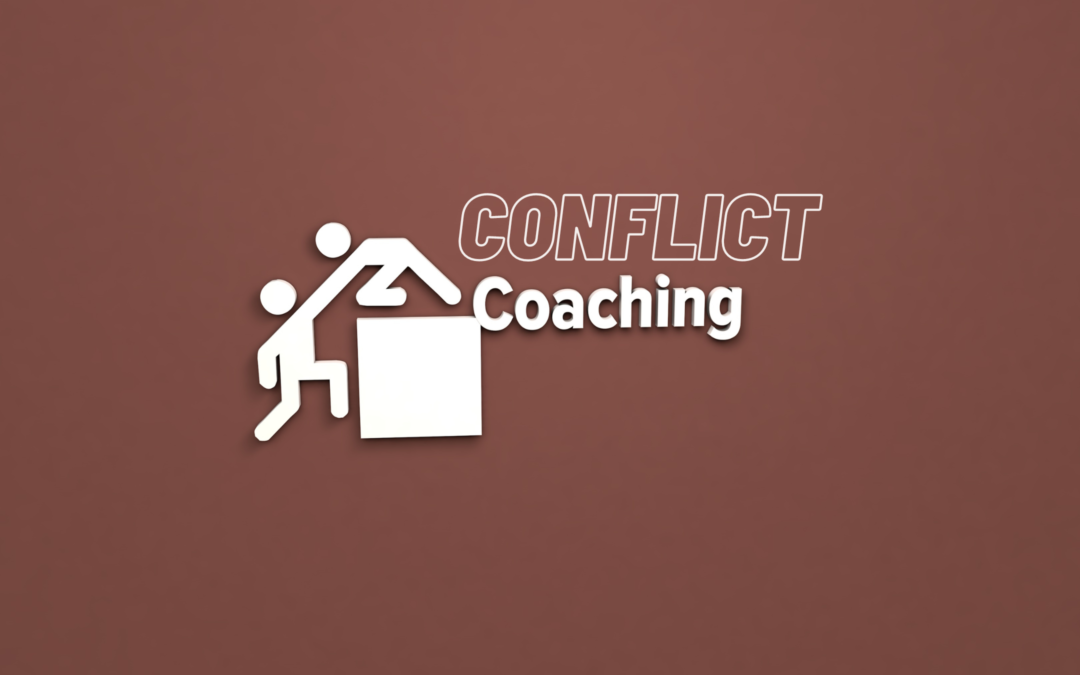
Sep 6, 2023 | All Posts, Conflict Resolution
We are constantly negotiating in our personal and professional lives to get our interests and needs met. Some negotiations matter more to us than others and some negotiations are more difficult than others.
When negotiations breakdown disappointment, anger, fear and frustration loom, relationships are damaged, profits decline, life is more difficult, and a costly conflict seems inevitable. Preparing and planning for your difficult negotiations is the best way to get ahead and stay ahead of conflict and get your interests and needs met. Conflict management coaches bring a vast toolkit of learnable skills and processes to assist you in your preparation. They will enhance your negotiation skills and coach you through the process.
Below is an example of how this preparation and planning can positively impact your businesses efficiency and productivity:
Biz Inc Developers entered into a co-management agreement with Giant Corp Developers to develop a very large real estate project with commercial centers and 1700 lots over a decade.
Each company’s middle management had a different interpretation of some key terms of the agreement. Biz Inc believed that certain responsibilities fell to them, and therefore were entitled to be compensated for completing them. Ginat Corp’s believed those same duties were not Biz Inc’s, and that they were not required to pay for them under their contractual agreement.
Each side enrolled their respective VPs in their story of how they were right, and the other side was wrong. Before engaging lawyers and embarking on costly and disruptive litigation, the two companies agreed to meet to see if they could negotiate a resolution of the issues.
Biz Inc Developers hired me as a conflict management coach.
I worked with the VP to unpack Biz Inc’s story separating the facts of what actually happened from the meanings being the interpretations, judgements and assumptions about those facts that drove the dispute. I then had him put himself in his Giant Corp’s shoes in order to make his best guess about Giant Corp’s own unique story. Once again, I had him separate the facts from the meanings.
This exercise brought clarity to the problem by highlighting the most important issues for each side, their key points of contention and identified where the underlying interests and needs of the parties converge. Armed with this clarity I worked with my VP to brainstorm options for potential resolution and helped Biz Inc explore their Best Alternative To a Negotiated Agreement (BATNA). They acknowledged that they could not walk away from this deal. This commitment to a resolution was crucial to their negotiation strategy.
Their brainstormed options were tested against how well they met both side’s interests and needs and a strategy was set to role out these options in the negotiation session. The VP’s met face to face and in 3 hours they were able to negotiate a settlement.
Biz Inc’s VP reported that he felt well prepared and in control. He was able to keep the conversations focused on good answers for the future rather than the past and fault and blame. He was able to confirm with his counterpart his best guess as to Giant Co’s interests and needs and propose options to meet them. Together they were able to agree on a strategy to support their management teams to work together.
David Gould LLB KC C Med
For help managing a high-conflict wealth transition, or to learn about how we can help you prepare for these conflicts, feel free to contact me today. I offer conflict coaching, conflict management training, and mediation services.

Aug 29, 2023 | All Posts, Conflict Resolution
Read Part 1 here
Read Part 2 here
Let’s begin with a simple premise. All conflict exists in our stories of the past about what happened to us and what we made it mean. Almost nowhere in life do we have more stories than within our families. Naturally, we believe in our own story and often assume we know our family members’ stories too.
The 13th century poet Rumi said, “Out beyond ideas of wrong-doing and right-doing there is a field. I’ll meet you there.” When family conversations embrace this sentiment, their conflicts become opportunities to grow together. Here are six steps to help you prepare to have difficult conversations with family and how to get them to join you in Rumi’s field.
1) – Recognize that you have a difficult conversation with the potential for conflict as early as possible. Choose to deal with it and to prepare to be successful with your family member(s). If your issue is important then simply avoiding conflict to keep the peace is a bad tactic.
2) – Explore your own story to separate what actually happened – the facts from what you made the facts mean. Take a blank sheet of paper and draw a line down the middle. On the left side write down the facts – the events exactly as they occurred. On the right side write down your meanings. These are your interpretations, judgements, and assumptions about those facts.
3) -Take another sheet of paper with a line down the middle. Put yourself in their shoes and make your best guess as to how your family member(s) see the facts and what they make those facts mean. Be as honest and objective as possible.
4) – Put the two sheets of paper side by side and identify where the facts and meanings are in conflict. Consider what you might do independently and in collaboration with the other party to clarify any factual conflicts and clear up misunderstandings. Agreeing on facts or a plan to establish the facts can be an excellent basis for productive negotiations.
5) – I think you will find that many of your conflicts are on the meaning side. Identify what interests and needs are really most important to both sides. These interests and needs are underlying the positions your family members are taking. They are also the building blocks of your options for reasonable resolution. As you do this work acknowledge your emotions but do not let them control you. It is these strong emotions triggered by your story of the past and what happened to you that traps you in conflict.
6) – It is now time to approach the other side. This is an invitation, not a demand. Both sides are invited to be part of a dialogue about the future and what’s possible. This is not a debate about the past and fault and blame. Here are some hints about how to get the other person to engage:
- Share what you have done to prepare and why you think this conversation matters to you and them.
- Share your commitment to focus on the future and what is possible and not stay stuck in the past.
- Share your understanding of what your preparation taught you about what was most important to them. Commit to listen to them as they confirm and clarify their story. Seek first to understand.
- Acknowledge the emotions as they arise and just as they are. Let them know you understand the impacts on them and share the impacts on you.
- It takes commitment to stay in the conversation when things get hard. It is okay to take a break and let things cool down but re engage as soon as you can.
Get help early:
For some difficult negotiations you may feel you need some help with your preparation. Look to your professional advisors, your business coach, your accountant, your lawyer, your financial planner or your family enterprise advisor. They are committed to your future and often willing to help with your preparations. Remember you want their objective insights not just their agreement with your story.
Finally, your family wealth transition may need a professional intervention. You can consider engaging a Conflict Management Coach or a Mediator to work with you to design and facilitate an effective intervention. Remember the earlier the better.
David Gould LLB KC C Med
For help managing a high-conflict wealth transition, or to learn about how we can help you prepare for these conflicts, feel free to contact me today. I offer conflict coaching, conflict management training, and mediation services.

Aug 23, 2023 | All Posts
Last week, we discussed how a mismanaged wealth transition can put a family in conflict and send them into a financial and emotional crisis. This next blog goes into detail about causes and symptoms of a failed transition.
Global statistics show that only 1/3 of families will successfully transition their wealth from the founder generation to the second generation; by the third generation that percentage drops to only 10%. Research has established that family wealth transition failures are attributable to a variety of factors:

- breakdown in communication and trust. (60%)
- lack of preparation of the rising generation (25%)
- no family vision (10%)
- inadequate tax and financial planning (3%)
As we saw with the Bailey family, parents tend to focus on the 3%. Typically, a triggering event will push parents to meet with their accountant, tax, and estate advisors.
The common process that ensues is the parents agree on a plan that is presented to them with few questions asked by trusted advisors and they proceed to sign documents without fully understanding how the documents will actually play out. Sometimes the documents are then stored in a “safe” location for future disclosure at the so called “right time.”
There is a saying: “plans that affect us but do not involve us, are not for us” which sums up how these approaches typically play out.
Problems arise when parents do not involve the rising generation – those who will be affected by the plans – in critical wealth transition discussions This is often coupled with a failure of parents to coach their children to be good owners and stewards of the family wealth they will inherit.
This happens for all kinds of reasons such as:
- planning by default (this is the way our parents/friends/colleagues “did it”)
- this is what our advisors recommended
- we don’t talk about these things in our family
- we just wanted to get it over with and the documents in place
- “Father knows best” or “it’s my stuff, so I’ll decide what happens with it and when”
- they are smart kids and they will figure it out
- they know what we would want them to do
- we’ve done our job, it’s up to them after we’re gone
With conflict such a prevalent outcome of traditional approaches to wealth transition, many plans for the future are unwound at great financial expense, with litigation being the only way out.
Even worse, this conflict comes at a high emotional cost. Families can be torn apart for current and future generations: summer vacations, weddings, births, graduations, and other family traditions become tension points instead of something to look forward to.
Excuses are made and events are avoided. Cousins don’t get to know one another or share experiences that create life-long family bonds.
The health of families, our communities, the economy, and charitable institutions are all in play as we face the largest global wealth transition in history. There is too much at stake to not get this right. So how do we get to the 95% and avoid the path of mediation or litigation?
- How do we get ahead and stay ahead of conflict?
- What would it look like for a family to be able to discuss challenges, concerns, dreams, goals, and opportunities?
- How does a family develop listening, communication, and negotiation skills and learn to have difficult conversations?
- What does decision making and conflict resolution processes in a family look like?
- How can families pursue financial growth and stability, and also nurture each person’s intellectual, social, and human growth?
- Where do our values and vision for the future fit in?
When the need to discuss business and wealth transition arises, this assumption alone can prevent us from engaging in proper communication with them. Without an open dialogue and a fulsome sharing of stories for understanding and not fault and blame, these discussions quickly breakdown.
This was authored by Dave Gould and Cindy Radu.
David Gould LLB KC C Med
Cindy Radu FCPA, LLB, LLM, TEP, ICD.D
For help managing a high-conflict wealth transition, or to learn about how we can help you prepare for these conflicts, feel free to contact me today. I offer conflict coaching, conflict management training, and mediation services.

Jul 31, 2023 | All Posts, Conflict Resolution, Mediation Solutions
When a wealth transition is not planned successfully, it can put a family in conflict and send them into a financial and emotional crisis. Here is one story about wealth transition and how unaddressed conflict in a family and lack of communication can tear families apart.
The Bailey Family: Based on a true story of family wealth transition
Mr. and Mrs. Bailey, both in their 60s, have two children Jeff and Anne. Jeff and his wife, Sue, have three children. Anne is single and does not have any children. Mr. and Mrs. Bailey worked very hard in BizCo the business they founded over 35 years ago.
Through the growth in value of BizCo, as well as savvy personal investments, the Baileys accumulated significant wealth and decided it was time to think about the future of BizCo and what to do with their wealth. Jeff rose to a senior executive position in BizCo and was responsible for its recent substantial growth, but Anne insisted she had no interest in the family business and refused to take on any role in the company. Jeff often butted heads with his dad, especially over Anne’s refusal to help out at BizCo.
The Baileys had not developed communication, conflict resolution, or decision-making skills as a family unit. Conflicts were left unaddressed and tensions among family members built up. Their family dynamics were unhealthy and at times downright dysfunctional. These conflicts exposed vulnerabilities in the family business and the family itself. Unfortunately, this story is one that is all too common.
Without consulting Jeff or Anne, Mr. Bailey engaged accounting, tax, and estate planning advisors to develop a business transition strategy and estate plan.
Not surprisingly, when Mr. Bailey presented this plan to his family, they blew up at him. Jeff threatened to withdraw from the business and Sue threatened to prevent the grandparents from seeing their grandchildren. Anne stormed out of the room and refused to have further discussions with anyone.
Mrs. Bailey was terribly upset at the thought of never seeing her grandchildren and was surprised by Jeff, Sue and Anne’s reaction to what she and Mr. Bailey thought seemed like a very good and fair plan.
Fortunately, the Baileys agreed to retain an experienced mediator. Each family member was individually engaged by the mediator in the design of their mediation process. This is an important step as it helps to create a sense of ownership over the process. It allows participants to actively create their own solution rather than having a decision imposed on them. The mediator was empowered by their agreement to intervene in the difficult conversations about the family’s troubled past and to help them stay focused on what they wanted for their shared future.
The mediation did not lead to instantaneous peace and reconciliation, as there is no quick-fix in these complex situations. However, by negotiating an agreement on a direction for the succession of the family assets, they established a shared vision for future communication and collaboration in the family and a commitment to further family counseling. The technical advisors were re-engaged, leading to an effective wealth transition plan that was agreed to by all family members.
Mr. Bailey told the mediator that the mediation had “saved his family”.
This article was authored by Dave Gould, with help from Cindy Radu.
David Gould LLB QC C Med
Cindy Radu FCPA, LLB, LLM, TEP, ICD.D
For help managing a high-conflict wealth transition, or to learn about how we can help you prepare for these conflicts, feel free to contact me today. I offer conflict coaching, conflict management training, and mediation services.

Jun 15, 2023 | Conflict Resolution
Reading Time: 2 minutes
The role of a mediator is often misunderstood. This can result in fuzzy or muddled expectations, and ultimately a failed process. Over time this lack of clarity can lead to counsel skepticism and resistance to mediation proposals. My “Design with Not For” approach aims to remedy this by establishing clear expectations about the mediation process, and about the roles of the mediator, the lawyers, and their clients.
Mediation works best when all the parties understand the process in which they are being invited to participate. The mediator and counsel can collaborate to determine the right balance between facilitation and evaluation. The parties can have meaningful input into their own role and that of their counsel. They can plan what information will really be required and how it will be shared. They can be encouraged to take more ownership of their own unique process.
Conflicts begins in our stories of the past and persists because of our attachment to that story. This has a huge impact on our path forward, and it is easy to view our positions as the best and sometimes the only acceptable outcome for our future. This explains a party’s willingness to endure the protracted nature and often prohibitive cost of litigation.
A skilled mediator will facilitate the sharing of stories. This is not about determining who is right or wrong, but instead seeks to reach an understanding of the underlying interests and needs that form each parties’ positions. This in turn sets the stage for the evaluative reality testing of options for resolution that are appropriate in each particular case.
In my nearly 30 years as a mediator, it has been my experience that for many simple and complex cases both mediators and lawyers can be effective collaborators in designing together a mediation process that fits the parties’ unique interests.
This “Design with Not For” approach seeks to establish, to the degree possible and right from the start, clear expectations about the mediation process, and the roles of the mediator, the lawyers and their clients.
The benefits for lawyers in this proactive design approach are threefold:
- The mediator becomes a very effective ally for the lawyer in managing the lawyer’s client(s).
- The time and effort required to properly prepare for mediation is much more effective.
- The client’s experience as a real and effective participant in the process is enhanced.
The result of mediations can have a massive impact on our lives. Something this important to the immediate well-being of the parties deserves to be properly designed.
For more information about these Steps or assistance with difficult negotiations contact:
[email protected]
403-801-0234
Page 1 of 712345...»Last »





